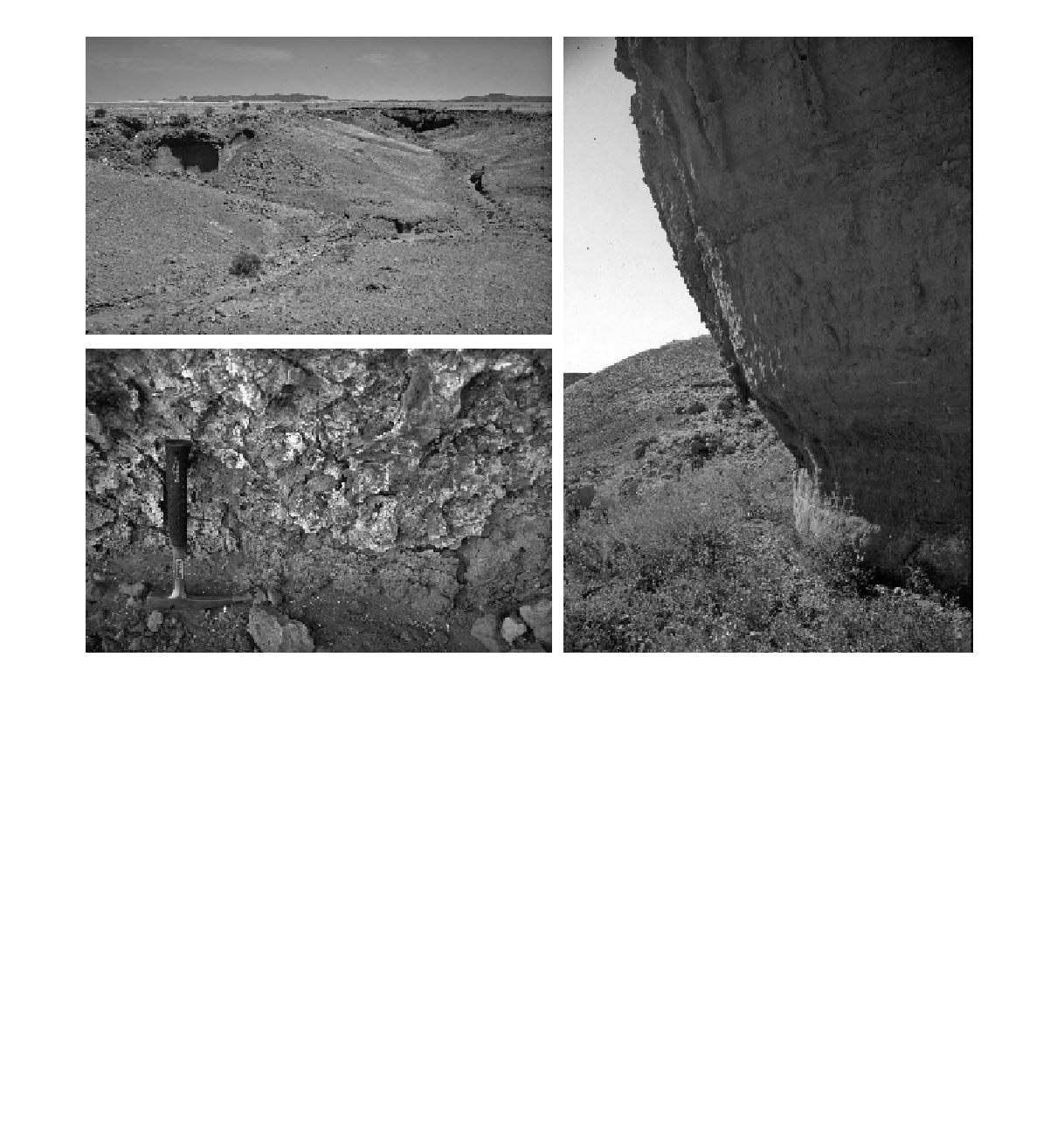Geoscience Reference
In-Depth Information
(a)
(b)
(c)
Figure 16.1
Groundwater seepage erosion valleys cut into a calcrete plateau south of the Gaub River, central Namib Desert: (a)
view of an amphitheatre valley head containing well-developed alcoves, (b) close-up of the undercut base of an amphitheatre
valley head wall with evidence of salt weathering along a seepage line, (c) detail of the zone of seepage with extensive salt
weathering damage.
canyons and drainage systems in a variety of terrestrial
and extraterrestrial settings (Figure 16.1 and Table 16.1).
These include submarine canyons (e.g. Robb
et al.
, 1982;
Robb, 1990), erosion cirques (Issar, 1983) and valleys
in environments ranging from some of the Earth's dri-
est (e.g. southwestern Egypt; see Maxwell, 1979) to its
wettest (the Hawaiian Islands; see Kochel and Piper, 1986;
Baker, 1990). It was, however, the identification of vast
valley systems on images of Mars from the Mariner 9
mission in the mid-1970s that generated most interest in
groundwater as a factor in valley formation (Baker, 1982;
Baker
et al.
, 1992). Despite the difficulties in ground-
truthing these images and identifying evidence for the
operation of seepage erosion processes, not to mention
the dangers of circular argument, many Martian valleys
were suggested to have formed by groundwater 'sapping'
by analogy with terrestrial valley networks (e.g. Pieri,
Goldspiel and Squyres, 2000; Gulick, 2001; Aharonson
et al.
, 2002; Grant and Parker, 2002; Luo, 2002; Harrison
and Grimm, 2005; Stepinski and Stepinski, 2005; Luo and
Howard, 2005, 2008).
The use of terrestrial analogues to explain the origin
of Martian valleys highlights one of the major problems
of many studies of the role of exfiltrating water in val-
ley development, namely that seepage erosion is often
invoked purely on the basis of morphological and mor-
phometric properties rather than by direct observation of
processes (cf. Lamb
et al.
, 2008). This arises, in part,
from the difficulties of making direct field observations
of groundwater seepage erosion processes in operation,
primarily due to the lack of accessibility at headwalls of
active gullies and streams. With the notable exceptions of
Laity (1983) and Onda (1994), most quantitative assess-
ments of the role of seepage erosion in valley development

